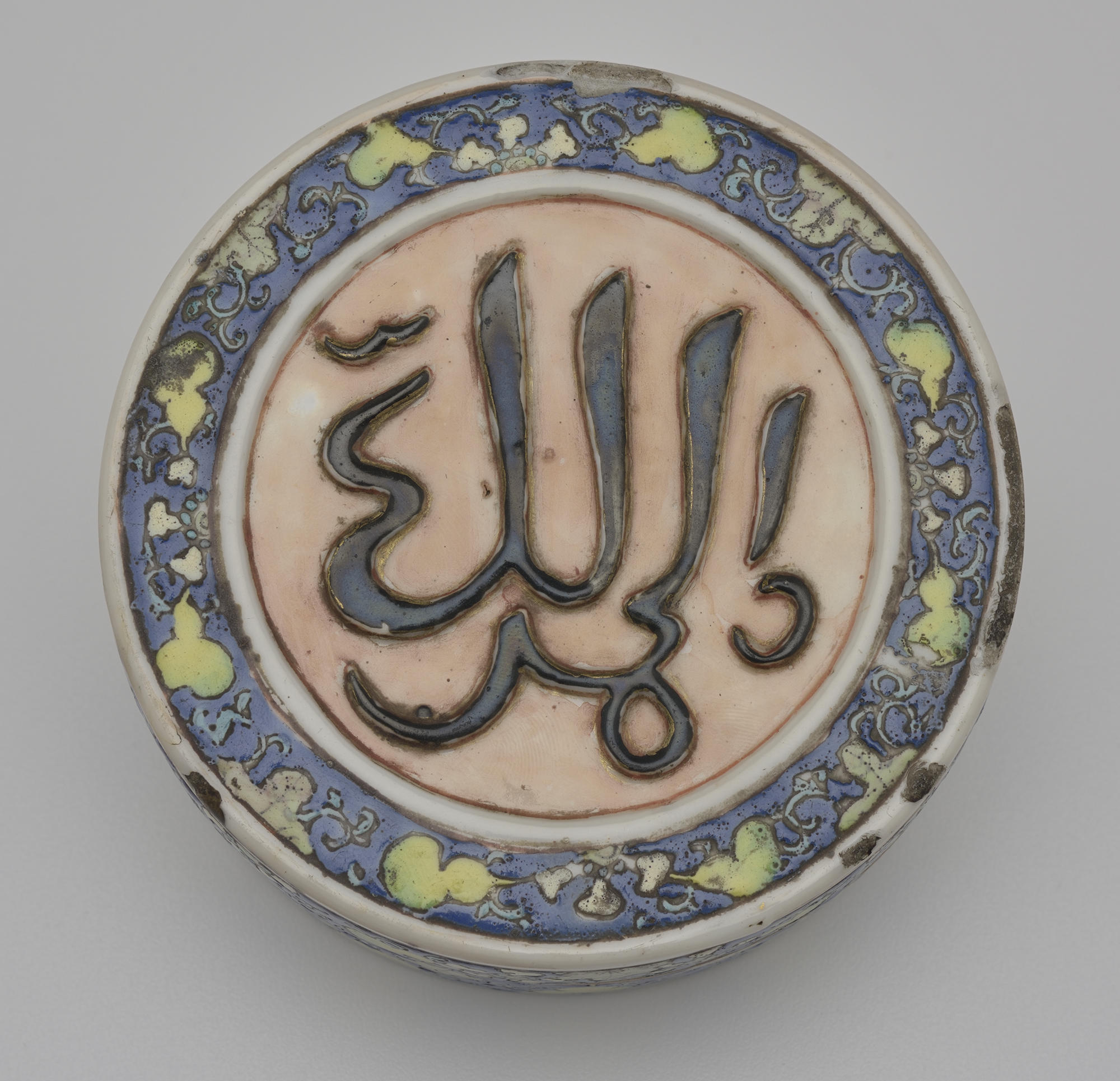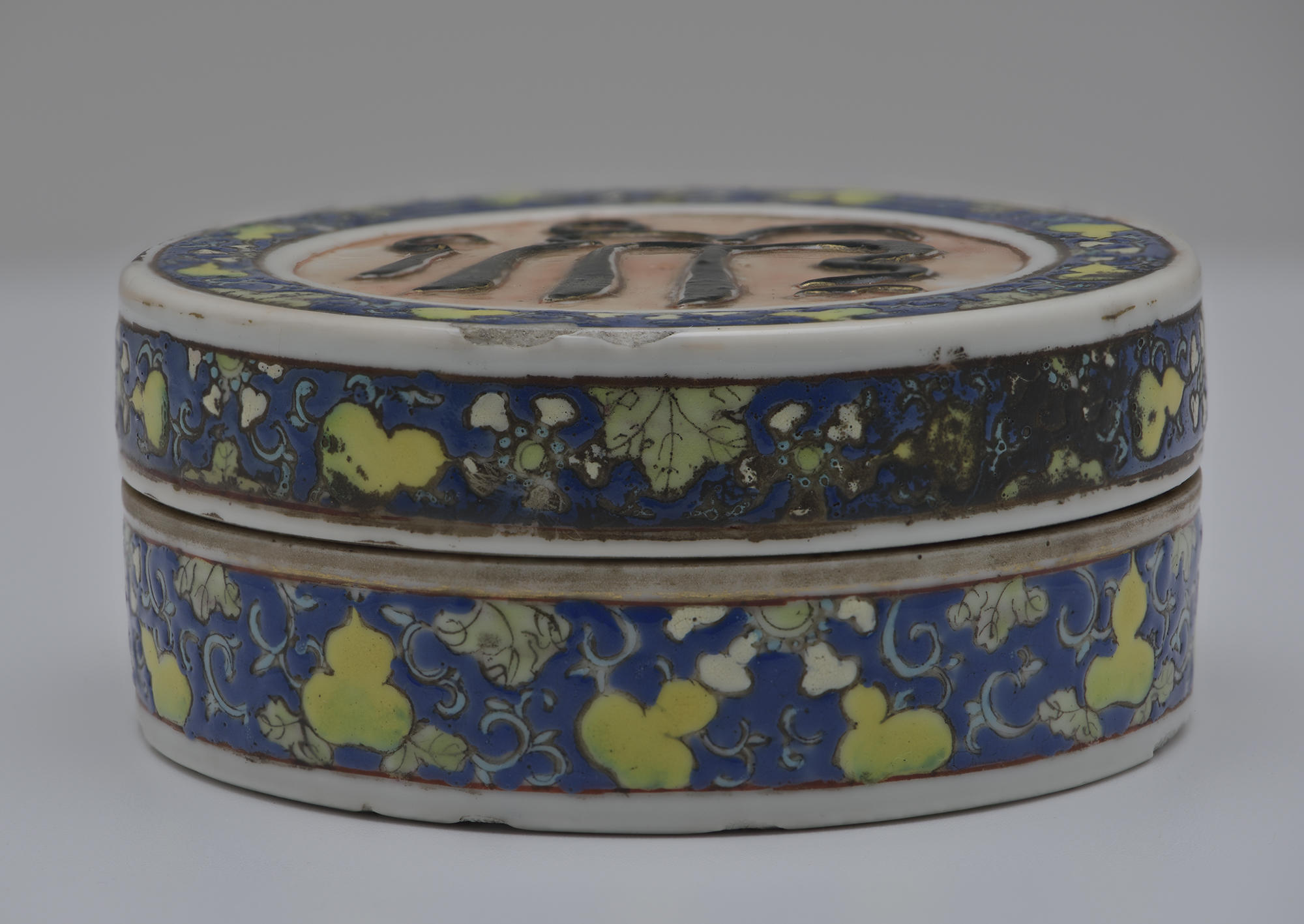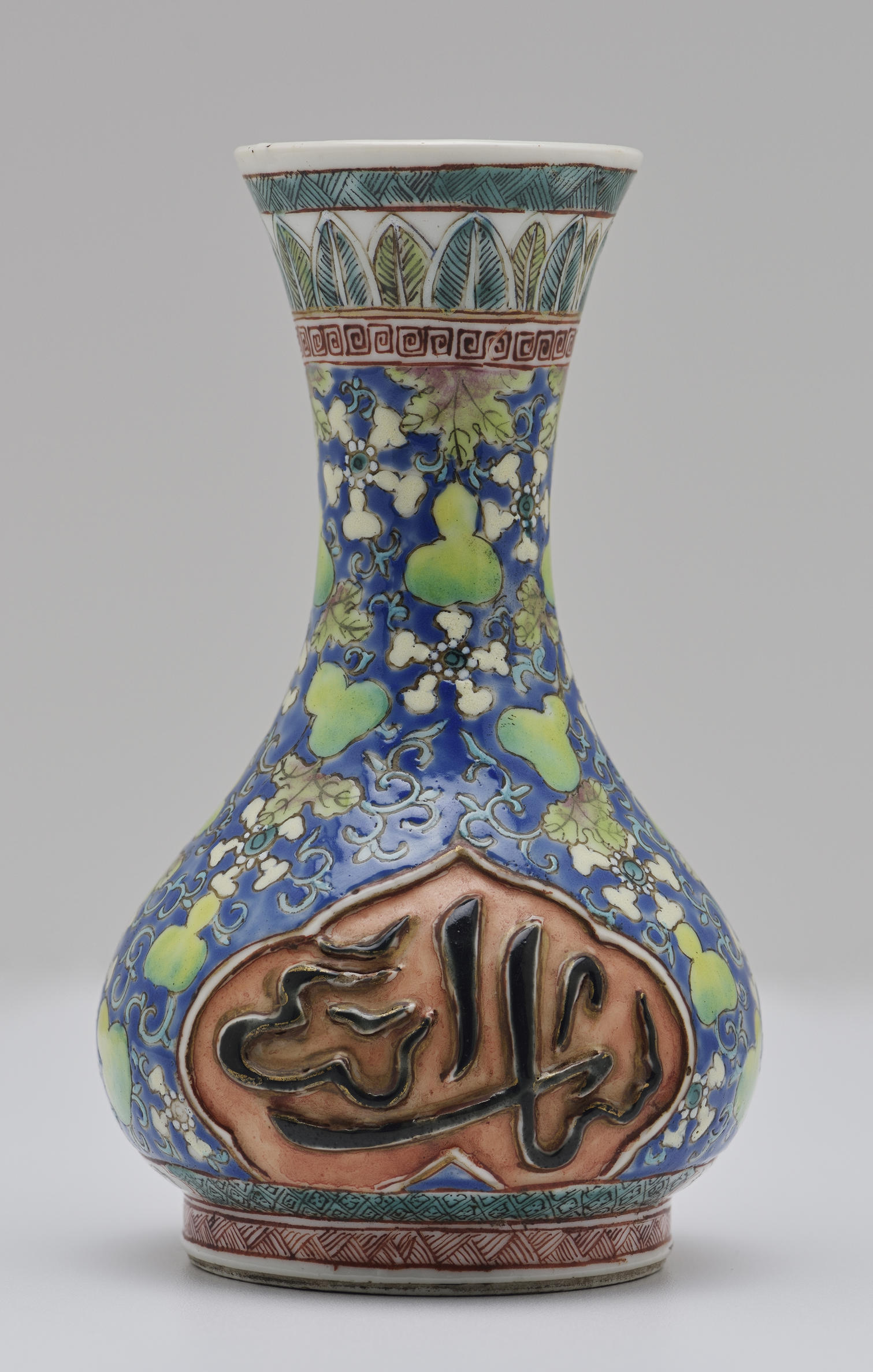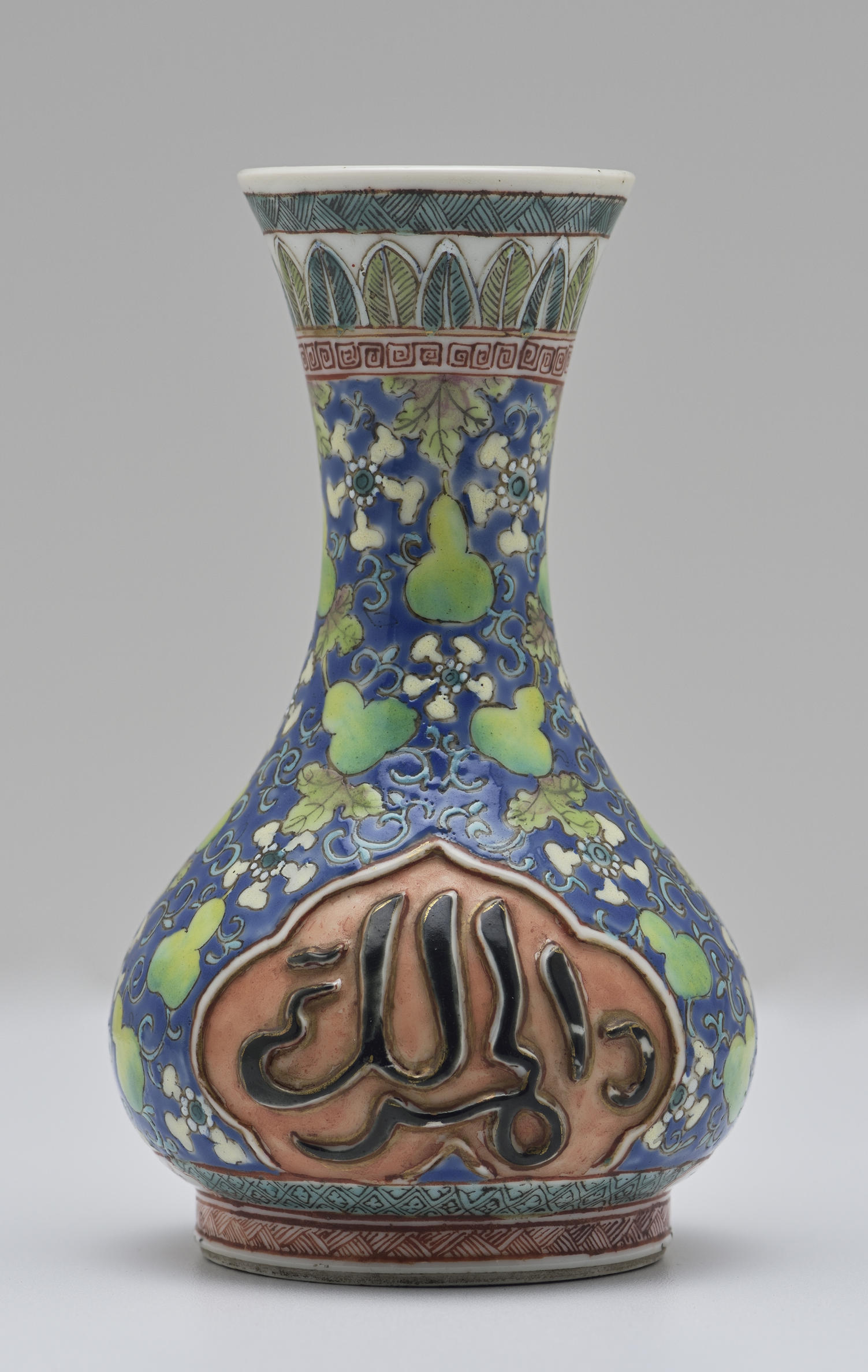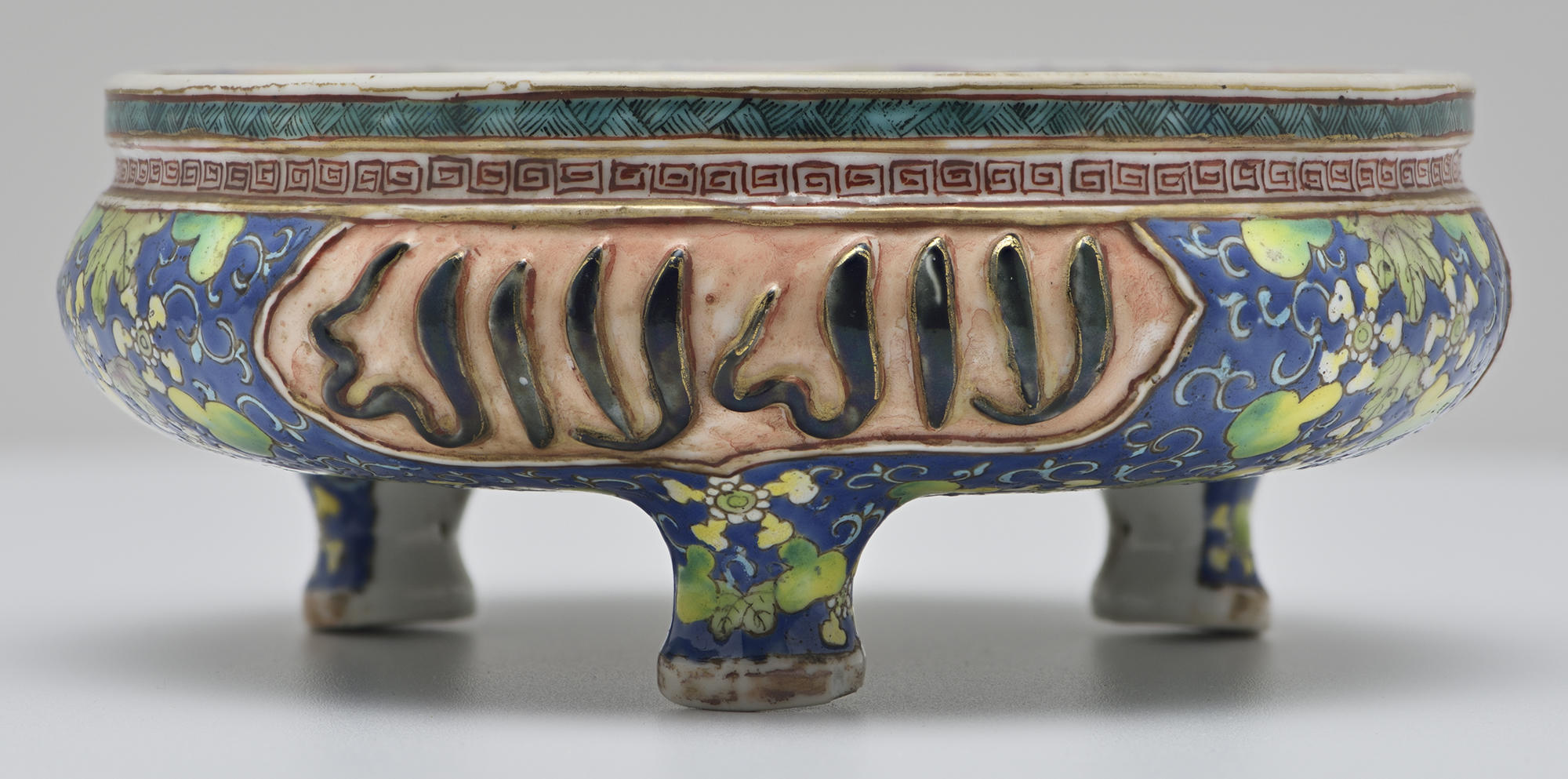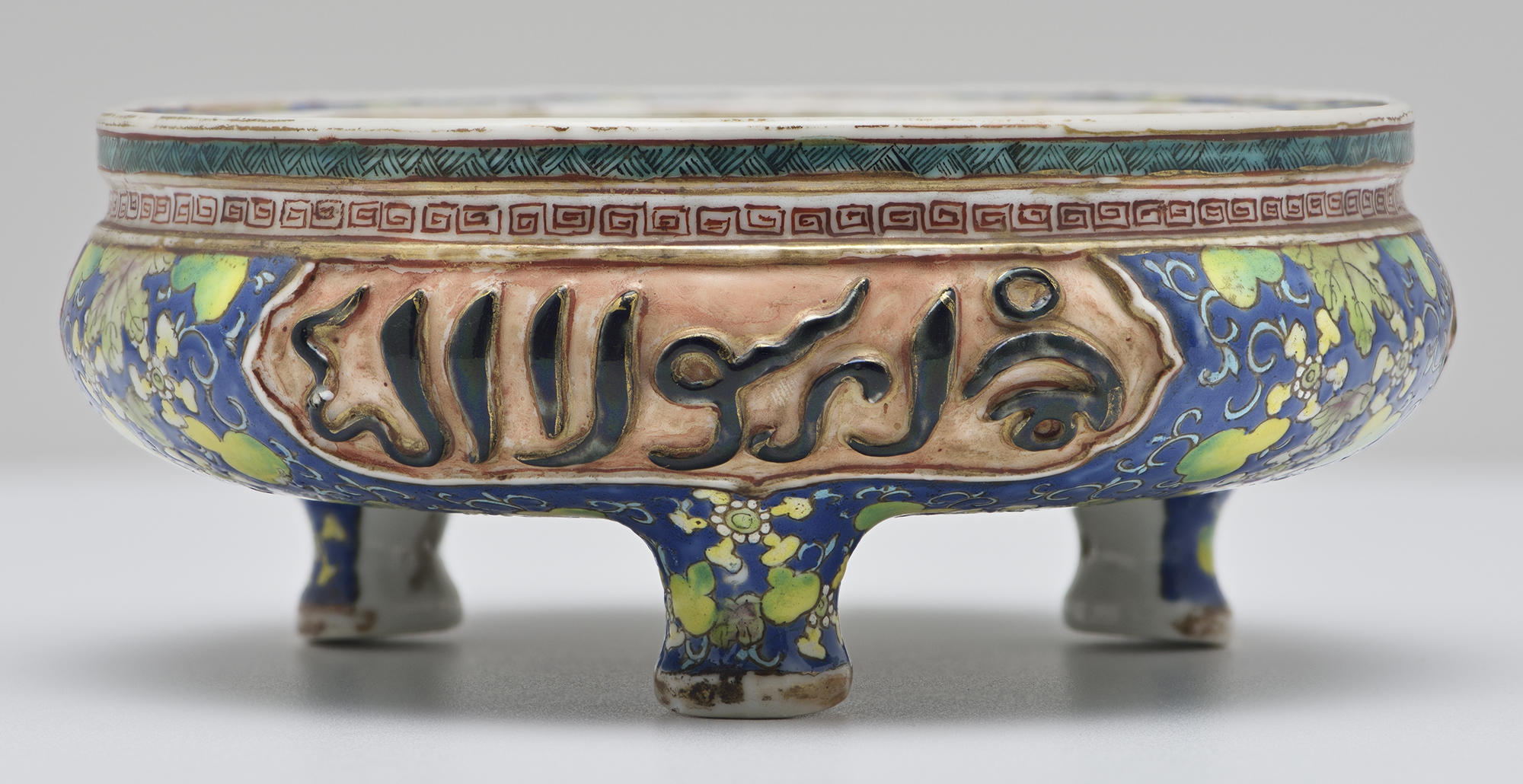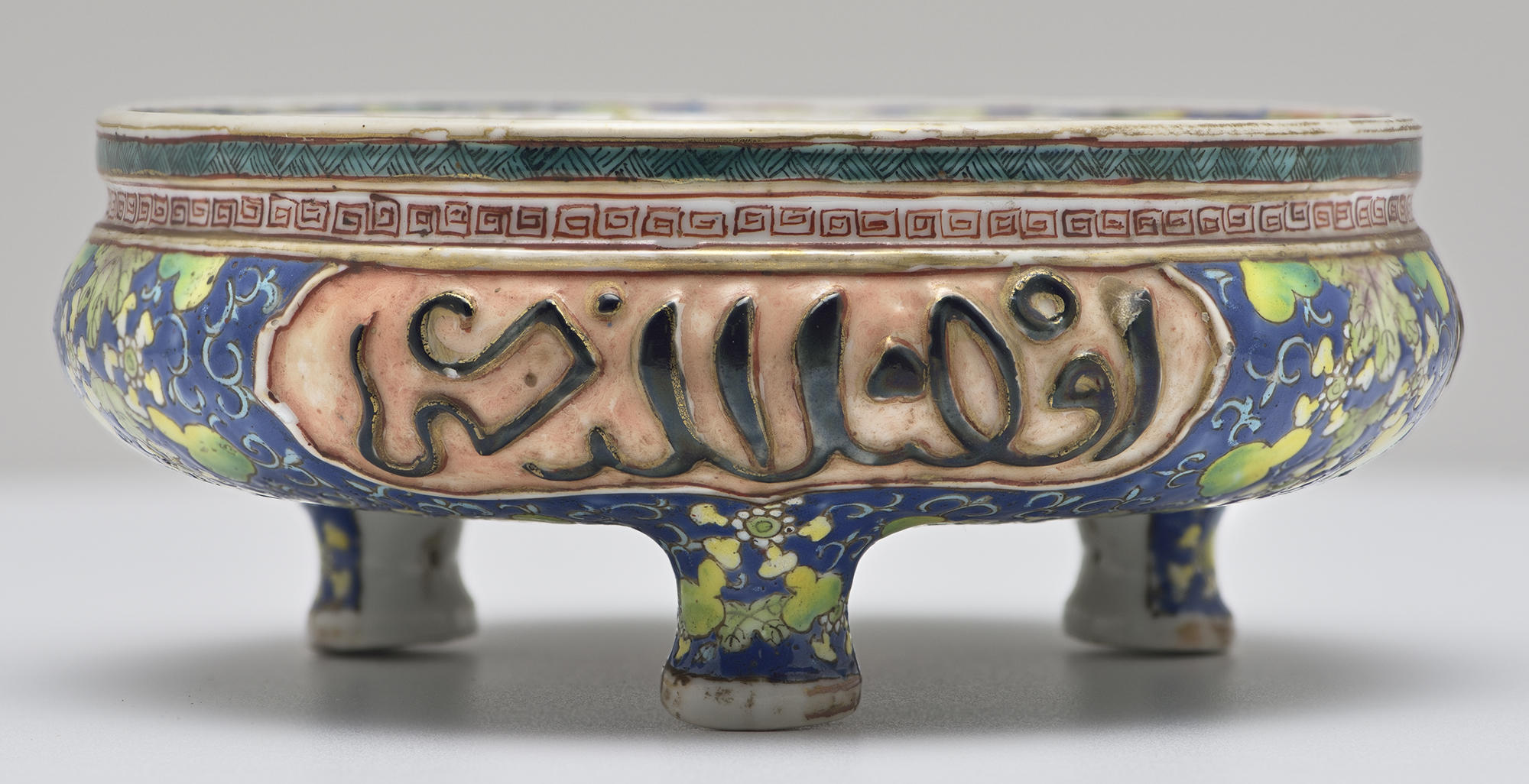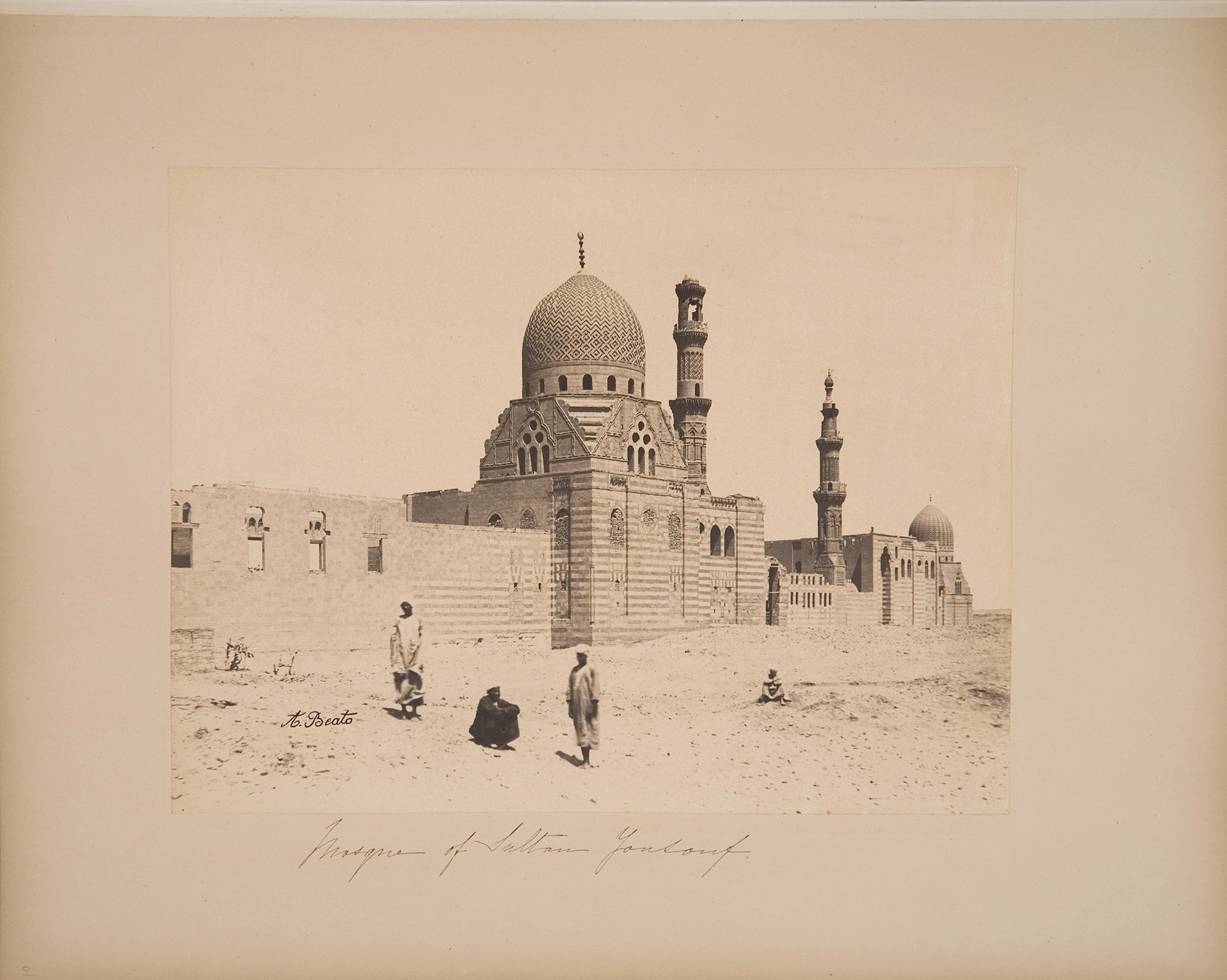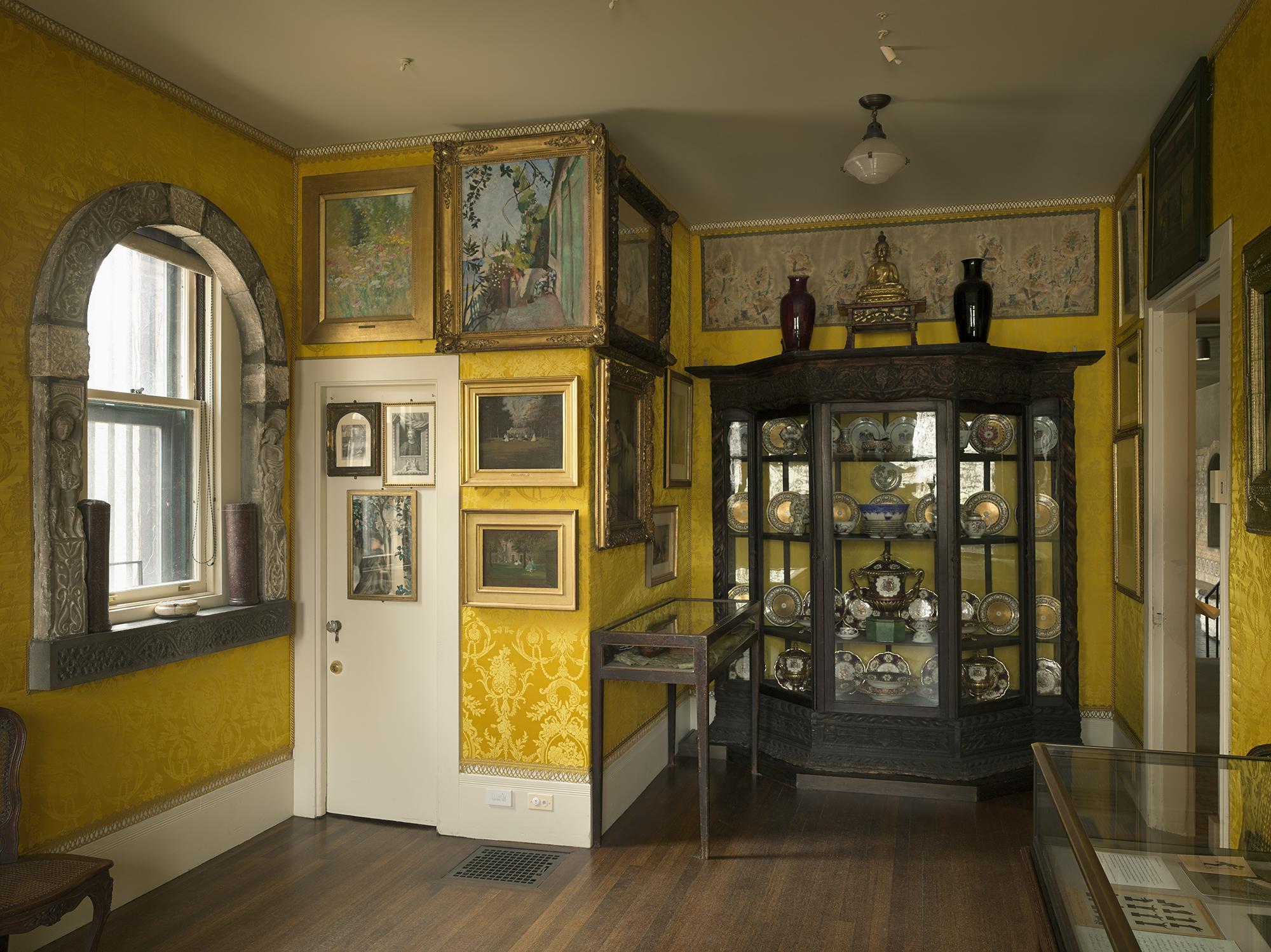Found on a loose piece of ledger paper within her diary entries from this trip is an Islamic prayer: "O Allah, O, O all powerful. Thou art my God, and sufficient to me is the knowledge of it. We pray Thee for safety in our going forth and in our comings in, our works and designs, our dangers and doubts. Subject unto us this Sea as Thou didst subject the deep unto Moses, and subject to us all the Seas in Earth and Heaven, the Sea of Life and the Sea of Futurity, O Thou who reignest over everything, and unto whom all things return."
Muslim people have lived in China for about 1,400 years. Today they represent only a small part of the country’s population. Sadly, like many religious minorities around the world, Chinese Muslims—including the Uyghur people living in the Northwest province of Xinjiang today—have been persecuted. Isabella did not document meeting any Muslim people while in China, but the inclusion of this Islamic prayer along with the purchase of these three Islamic altar vessels highlights her pointed interest in understanding the religion.
